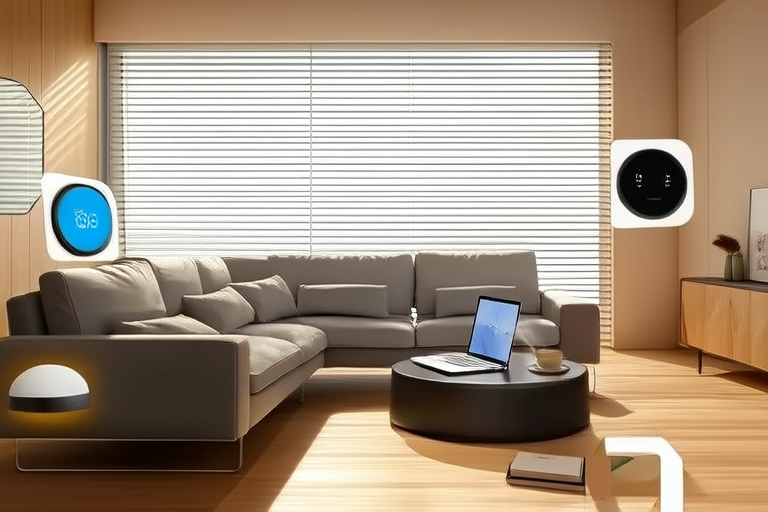“`html
Maximizing Efficiency: Best Practices for Managing Your Smart Home
Introduction
The concept of smart homes has rapidly gained popularity over the past decade. These homes are equipped with advanced technologies that enable homeowners to control various aspects of their living spaces remotely and automate many routine tasks. By integrating smart devices such as thermostats, lighting systems, security cameras, and voice assistants, smart homes offer increased convenience, energy efficiency, and enhanced security.
Smart home technology not only simplifies daily life but also contributes significantly to environmental sustainability by reducing energy consumption. This article will explore best practices for setting up and managing a smart home system effectively, ensuring maximum efficiency and security.
Understanding Smart Home Components
A smart home consists of several interconnected components designed to work together seamlessly. Key elements include:
- Smart Thermostats: Automatically adjust temperature settings based on occupancy patterns and weather forecasts.
- Lighting Systems: Control lights via smartphone apps or voice commands, allowing users to create personalized scenes.
- Security Cameras: Monitor activity around the house and send real-time notifications if any unusual behavior is detected.
- Smart Speakers: Serve as central hubs for controlling other smart devices through voice commands.
Compatibility between devices from different manufacturers is crucial for smooth operation. Ensure all selected products support common standards like Zigbee, Z-Wave, or Wi-Fi.
Setting Up Your Smart Home System
To set up a smart home system, follow these steps:
- Select a Hub or Controller: Choose a central device that acts as an interface between your smartphone and individual smart gadgets. Popular options include Google Nest Hub, Amazon Echo, and Samsung SmartThings.
- Install Devices: Follow manufacturer guidelines to install each component correctly. Proper installation ensures reliable connectivity and functionality.
- Configure Settings: Use accompanying mobile apps to customize preferences, schedule events, and link devices together.
Proper installation and configuration are essential for optimal performance. Take time to read manuals thoroughly and seek professional assistance if needed.
Optimizing Energy Efficiency
One of the primary advantages of smart home technology is its ability to reduce energy usage. Here’s how you can achieve this:
- Automate Heating & Cooling: Set schedules for when HVAC units should turn on/off automatically based on occupancy patterns.
- Monitor Usage: Many smart meters provide detailed energy consumption reports, helping identify areas for improvement.
- Use Solar Panels: Pair solar panels with battery storage systems to power your home during peak demand hours.
By leveraging these features, homeowners can save money while contributing positively towards environmental conservation efforts.
Enhancing Security
Smart home devices play a vital role in boosting home security:
- Motion Sensors: Detect movement within designated areas and trigger alarms or notify owners via text message.
- Doorbell Cameras: Allow remote viewing of visitors at front doors, providing peace of mind even when away.
- Automated Locks: Enable secure entry without needing physical keys, ideal for busy lifestyles.
Additionally, setting up alert systems helps ensure timely responses to potential threats, safeguarding both property and occupants.
Simplifying Daily Routines
Streamline daily activities with smart home integrations:
- Cooking: Use smart ovens that preheat automatically upon arrival or start cooking at specific times.
- Cleaning: Schedule robotic vacuum cleaners to clean floors during off-hours.
- Entertainment: Create multi-room audio setups controlled via single app interfaces.
Integrating voice assistants and creating automation routines further enhances convenience, making life easier and more enjoyable.
Ensuring Privacy and Data Security
While smart home technologies bring numerous benefits, they also raise valid concerns regarding privacy and data protection:
- Secure Network: Regularly update router firmware and employ strong passwords.
- Two-Factor Authentication: Enable two-factor authentication wherever possible.
- Data Encryption: Ensure sensitive information remains encrypted during transmission.
By taking proactive measures, homeowners can minimize risks associated with cyber threats and maintain peace of mind.
Future Trends in Smart Home Technology
Emerging trends promise even greater efficiencies and improved user experiences:
- Artificial Intelligence: AI-driven assistants capable of learning user preferences and adjusting settings accordingly.
- Augmented Reality: AR applications facilitating virtual tours of properties before purchase decisions.
- 5G Connectivity: Faster internet speeds enabling smoother operations across multiple devices simultaneously.
Stay informed about ongoing innovations to capitalize on future opportunities.
Conclusion
In conclusion, adopting smart home technologies offers substantial rewards in terms of convenience, cost savings, and environmental impact. By following best practices outlined herein—ranging from selecting compatible hardware to maintaining robust cybersecurity measures—homeowners can maximize efficiency and enjoy enhanced quality of life.
Investment in smart home solutions pays dividends over time, offering long-term benefits worth considering.
“`


